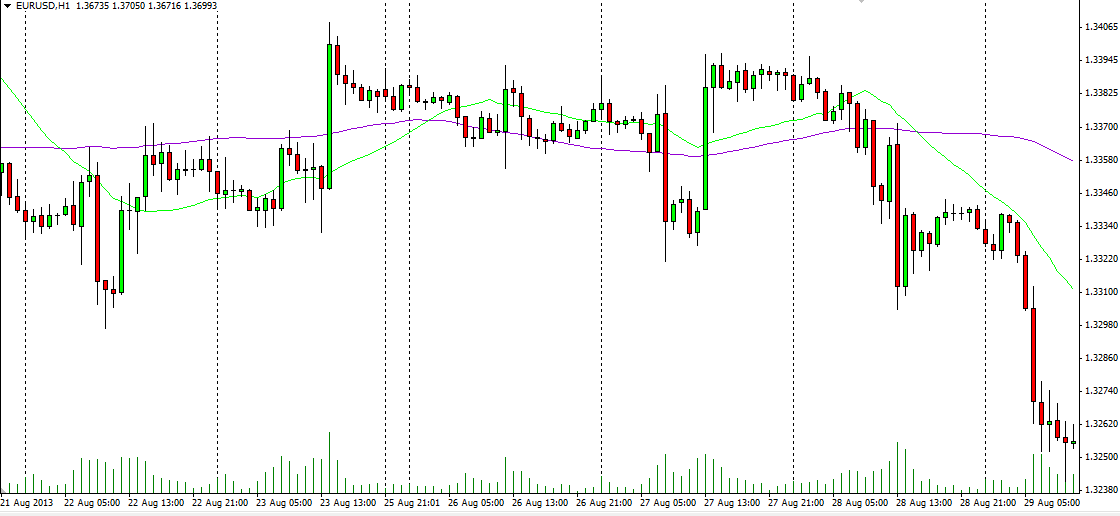Factory Orders, Industrial Production
This lesson will cover the following
- Factory Orders?
- Durable Goods Orders
- Industrial Production and Capacity Utilization
Factory Orders and Industrial Production are measures which provide an actual picture of what is going on in the countrys industry. Although those two indicators are lacking high market influence, they may give important signals for the ones which could successfully decipher them. In the next paragraphs those indicators along with their composing sub-indicators would be exposed to your attention.
Factory Orders
Factory Orders represent an economic indicator which consists of two separate indicators; durable and non-durable goods orders.
The non-durable goods orders include items such as food, clothing, tobacco and other products that help with the maintenance of durable goods. The factory orders numbers are reported monthly by the U.S. Department of Commerce. The report helps economists determine whether the economy is expanding or not.
An increase in factory orders could indicate an expansion and could signal that inflation is on the rise. Because the durable goods orders are reported one or two weeks earlier, the factory orders report is fairly predictable, due to the fact that the non-durable component is the only new data reported. The Factory Orders report is usually not a market mover, but can draw attention when revised durable goods orders are included into the report.
The information in the report is specifically concerning factory inventories. While the inventory figures themselves do not tend to affect markets, economists do use this number to help forecast inventories calculations in the quarterly GDP report. The Factory Orders report is released by the U.S. Census Bureau within the first few days of each month.
Durable goods orders
The Durable Goods Orders indicator gauges the strength of a countrys manufacturing sector and is a composite of the Factory Orders report. It is a closely watched gauge of manufacturing activity because these are the first type of goods to be affected by an economic downturn or upturn. Durable goods are designed to last three or more years and include airplanes, cars and buses, cranes, machine parts, appliances etc. More than 85 industries are represented in the sample, which covers the entire United States. The logic behind these purchases is that consumers need to be very optimistic to buy a car compared to daily necessities such as clothing. Therefore these are among the first goods to be held off, if an economy begins to contract. The same counts for company purchases – during a recession, an airliner is less likely to purchase new planes and as a factorys output contracts, it is less likely that it will purchase new machines.
You should be cautious to see through the high levels of volatility found in areas of the Durable Goods Report. Month-to-month changes should be compared with year-over-year figures and year-to-date estimates, looking for the overall trends that tend to define the business cycle.
To better visualize the effect of Durable Goods Order report on the Forex market, look at the graph below. The EUR/USD pair is moving upwards between 12:00 and 13:00 GMT as the report shows negative numbers compared both to the estimations and previous period data. The Euro is appreciating against dollar and thats why you see a fairly large green candle at this exact time.
Source: MetaTrader 4 by MetaQuotes Software Corp.
Industrial Production and Capacity Utilization
Industrial production is simultaneously released along with Capacity utilization data. The indicators figures measure the raw volume of goods produced by factories, mines and utilities in the US on a monthly basis. Industrial output also includes figures from the newspapers, periodicals and book publishing businesses, traditionally deemed as a component of the manufacturing sector.
The Industrial Production Index is sensitive to consumer demand and interest rates. As such, Industrial Production becomes an important tool for future GDP and economic performance forecasts. Those figures are also used to measure inflation by central banks as high levels of industrial production may lead to uncontrolled levels of consumption and rapid inflation.
The industrial production and capacity utilization data are deemed coincident indicators, which means that changes in their levels generally echo similar shifts in overall economic activity. Their calculation shows percentage changes on monthly and annuals basis and provides with information regarding short-term rates of change and business cycle growth.
The Federal Reserve tends to keep a close watch on these figures since inflation shows itself first at the industrial level, when supplies of basic materials get tight – either for manufacturers or for their business clients. As prices of raw materials begin to increase, they are bound to get passed on up the chain, ending up with individual consumers purchasing more expensive finished products.
Capacity Utilization
Capacity utilization levels measure how much of a companys potential output is being achieved. The reading is displayed as a percentage, which technically could be reaching 100%, and basically shows how much the company can increase its production without having to incur additional costs for building a new unit or facility. However in practice, maximum output is not approached, and utilization levels above 82 – 85 percent are seen as tight and predict supply outages or price gains in the near future. Meanwhile, levels below 80% reflect some slack in the economy, which can lead to a fall in employment and fuel recession worries.
Although the rate of capacity utilization is considered as a critical gauge of the standstill in the economy, the market does not completely trust this measure. Capacity utilization is difficult to calculate, and the Fed tends to assume that capacity growth in any given year remains little changed, or none at all.
